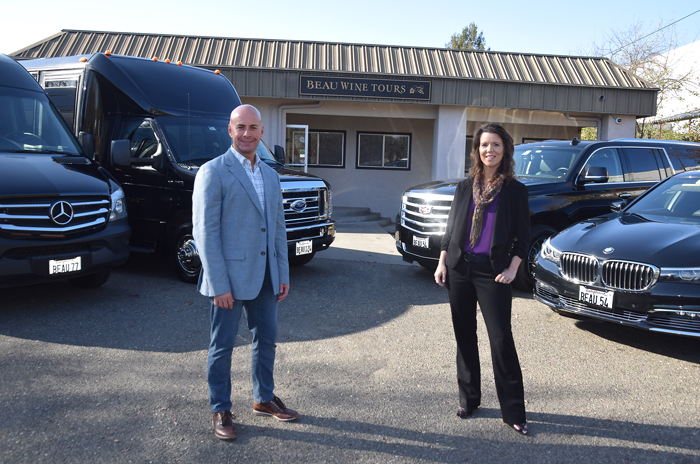 Beau Wine Tours President Thomas Buck and Director of Affiliate Relations Christina Zanone at the company headquarters in Sonoma County, California
The stunning verdant and sepia landscape cradled on both sides by rolling hills and splendid peaks is the quintessential Napa and Sonoma valleys. The region, forged by the perfect combination of geological forces from earthquakes to volcanic activity, is an ecological goldmine that contains some of the best soil conditions on the planet for growing the valley’s most beloved crop: grapes. Because of the area’s diverse soil elements and ideal weather—cool, dewy mornings give way to warm, sunny afternoons—vineyards are able to nurture more than 30 varieties of grapes, which are transformed into luscious wines including Merlot, Zinfandel, Chardonnay, Pinot Noir, and its most popular, Cabernet Sauvignon. More than 3.5 million visitors from all over the world descend upon the region universally known as Wine Country for the vino, but it’s the experience that makes them fall in love.
Beau Wine Tours President Thomas Buck and Director of Affiliate Relations Christina Zanone at the company headquarters in Sonoma County, California
The stunning verdant and sepia landscape cradled on both sides by rolling hills and splendid peaks is the quintessential Napa and Sonoma valleys. The region, forged by the perfect combination of geological forces from earthquakes to volcanic activity, is an ecological goldmine that contains some of the best soil conditions on the planet for growing the valley’s most beloved crop: grapes. Because of the area’s diverse soil elements and ideal weather—cool, dewy mornings give way to warm, sunny afternoons—vineyards are able to nurture more than 30 varieties of grapes, which are transformed into luscious wines including Merlot, Zinfandel, Chardonnay, Pinot Noir, and its most popular, Cabernet Sauvignon. More than 3.5 million visitors from all over the world descend upon the region universally known as Wine Country for the vino, but it’s the experience that makes them fall in love.
That’s how Thomas Buck’s passion for the wine industry was ignited more than 20 years ago. The Beau Wine Tours president, then a recent grad of Sonoma State, was looking to pay down some student loan debt by moonlighting part time for a transportation company that specialized in wine tours. He never envisioned that a side hustle would bloom into a lifelong pursuit ... but more on that later.
“I came into this industry like many other operators: indirectly and not on purpose,” jokes Buck. “That job as a chauffeur took me to many of the area’s wineries and I really became fascinated by the process behind it. I made a lot of connections and friends, and I just fell in love with the wine industry itself. I threw myself into learning everything could about it, but before then, I would have hesitated to tell you the difference between a Chardonnay or a Merlot.”
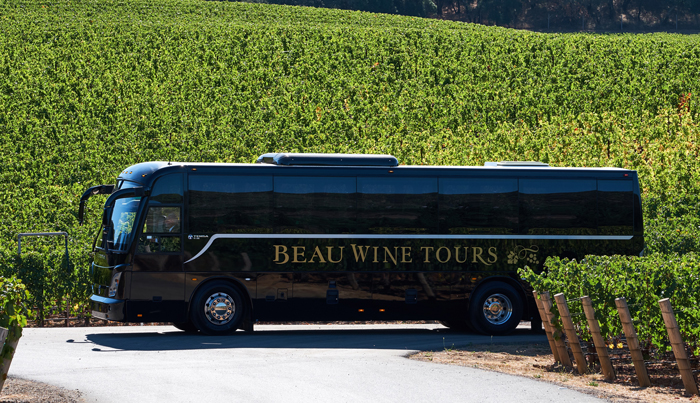 The company runs a variety of vehicles from sedans to full-size coaches
Around the same time, his buddy from college was growing his own side gig with a corporate transportation service called Beau Limousines, based about an hour south on the 101 in Marin. He eventually convinced Buck to join the company where he rose through the ranks.
The company runs a variety of vehicles from sedans to full-size coaches
Around the same time, his buddy from college was growing his own side gig with a corporate transportation service called Beau Limousines, based about an hour south on the 101 in Marin. He eventually convinced Buck to join the company where he rose through the ranks.
But Buck, still bitten by the wine bug, knew that there was gold in those hills—and it wasn’t just the Pinot.
Wine Country as a destination has been rising steadily since the ’70s, and at the time there was only a handful of transportation companies that were entrenched in building relationships with the local wineries. Although it’s not far from San Francisco, Wine Country is largely pastoral: Understanding the strengths and preferences of the different properties, as well as their limitations regarding group size and scope, were niche skills that not many transportation operations possessed. Buck had the connections, and it wasn’t long before he and his buddy were transforming Beau into a full-fledged tour business rather than strictly catering to corporate.
“I found that, with the exception of a few, most transportation companies were trying to be in five different lanes at once and nobody was good at any of them,” he says about his multiservice competitors of the time that are long out of business. “That’s when we made the transition exclusively to wine tours.” In the late ’90s, after a rebranding process began, the company re-emerged as Beau Wine Tours. In the following years, Buck bought out his friend’s share of the company, became the sole owner, and moved the headquarters to Sonoma County in the early 2000s.
"Where I was once knocking on their doors, I find that wineries are now knocking on ours because of our reputation. They appreciate that we respect their business." — Thomas Buck
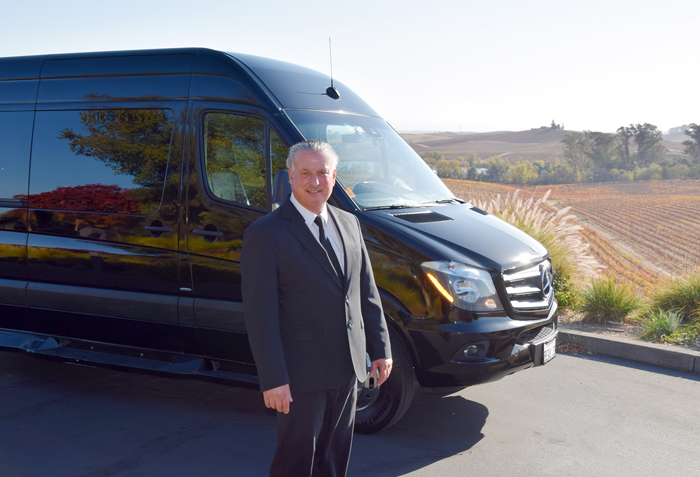 Beau Chauffeur/Tour Guide Peter Nereo at Artesa Winery
Beau’s reputation and Buck’s knowledge of the wine industry opened doors: He found that developing those friendships and cultivating those relationships with wineries and resorts reaped rewards. The extra efforts that his company made via in-house concierges, who helped to drill down on what their guests desired and matched them with the right properties to visit, enhanced the experience for all involved.
Beau Chauffeur/Tour Guide Peter Nereo at Artesa Winery
Beau’s reputation and Buck’s knowledge of the wine industry opened doors: He found that developing those friendships and cultivating those relationships with wineries and resorts reaped rewards. The extra efforts that his company made via in-house concierges, who helped to drill down on what their guests desired and matched them with the right properties to visit, enhanced the experience for all involved.
“Our concierge spends an average of 15-20 minutes on the phone with a customer to book a high-quality, custom wine tour—it’s not a two-minute reservation,” Buck says.
Christina Zanone, director of affiliate relations and Buck’s right-hand person for the past 10 years, oversees the sales and concierge teams. She explains more about the high-touch, white-glove concierge services that are rather different than traditional chauffeured transportation models: “Our services are very customized, so on that first sales call we just want to assess the comfort level of the client. We have many first-time visitors who know little about wine to those who have been here multiple times and are looking for something off the beaten path. If we’re going to pair wineries to their criteria, we want to do so with the knowledge that these wineries complement the clients’ pricing, their palates, and type of atmosphere they are looking for.”
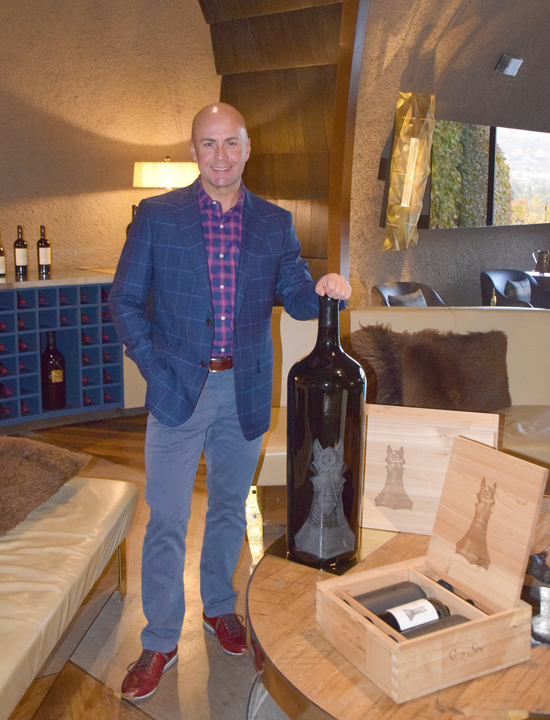 Buck is also the vintner of Sire Estate
Buck adds that his concierges aren’t just selling a car or an experience, but they are literally educating customers on the geography of the region and providing realistic expectations of what they can do during their stay. Whether it’s the upscale and trendy Napa Valley, or the casual, laid-back vibe of Sonoma, Beau’s concierges pride themselves on being knowledgeable hosts to their guests, and serving as a planner, sommelier, and transportation expert whether it’s their own client or one of their affiliate’s VIPs.
Buck is also the vintner of Sire Estate
Buck adds that his concierges aren’t just selling a car or an experience, but they are literally educating customers on the geography of the region and providing realistic expectations of what they can do during their stay. Whether it’s the upscale and trendy Napa Valley, or the casual, laid-back vibe of Sonoma, Beau’s concierges pride themselves on being knowledgeable hosts to their guests, and serving as a planner, sommelier, and transportation expert whether it’s their own client or one of their affiliate’s VIPs.
Zanone adds that Beau’s team will strive to add variety to the tour, spicing it up with a mix of properties that offer intimate wine-tasting experiences, or have spectacular views, or even those that have a comfortable family vibe. But it’s not all wine: She and her team also consider dining options based on their clients’ preferences, budget, appetites, and length of the tour.
A decade ago, Buck started his shift toward additional sales channels, confident that his operation could handle these new service areas well. By far, wine and tourism are the biggest drivers in the Napa economy, but visitors also seek the valley for its serenity and natural beauty. Art galleries, culinary classes and a plethora of farm-to-table dining experiences, wellness resorts, leisurely bike rides through unique towns, and hot air balloon rides bookend trips to wine cellars and caves. If tourists tire of all that wine—is that possible?—there are breweries to balance out their palate. Executive retreats and meetings are also a popular option. While tourism generated $2.2B in Napa Valley in 2018—up from $1.4B six years earlier—it can be seasonal. The busiest time is September and October, known locally as crush season because it’s when the grapes are harvested, but it does slow down in the winter months.
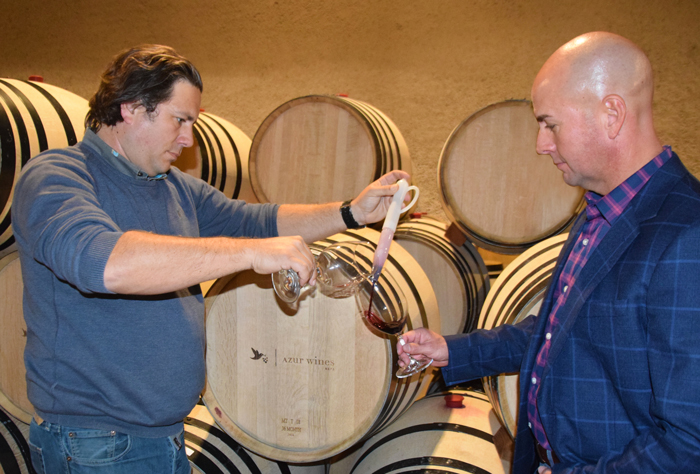 Buck works with renown winemaker Julien Fayard (left) to develop Sire Estate
“When we got into the wine touring business, there was only one major competitor and that was my former boss—a great guy who I still work with today. Now there are about five large companies, all with more than 100 vehicles, plus a bunch of small and midsize companies that all want their slice. The market is so saturated. About 10 years ago, our wine tour work was about 80 percent of our business. Now it’s around 55 percent,” says Buck.
Buck works with renown winemaker Julien Fayard (left) to develop Sire Estate
“When we got into the wine touring business, there was only one major competitor and that was my former boss—a great guy who I still work with today. Now there are about five large companies, all with more than 100 vehicles, plus a bunch of small and midsize companies that all want their slice. The market is so saturated. About 10 years ago, our wine tour work was about 80 percent of our business. Now it’s around 55 percent,” says Buck.
The advantageous location of the Beau office in Sonoma places it only 30 minutes from the major properties in Napa, but also an hour from San Francisco on a good traffic day. Using his fleet of 65—which is primarily made up of buses, vans, Sprinters, sedans, SUVs and now trolleys—and chauffeur team of more than 70, Buck started courting more group work, partnerships with DMCs, and roadshows, as well as point-to-point transfers and employee shuttles. Typical groups range between 20 and 40 people, although Beau has handled those as large as several hundred. The area also has a fair amount of retail work, including weddings and nights on the town, although Beau has seen some decline as TNCs moved into their market. Attracting corporate customers was a return to Beau’s roots.
More importantly, Buck hired Zanone, who was tasked with growing their in-bound affiliate work in earnest and now oversees global affiliate relationships as well as the Beau sales and concierge teams. In many ways, he was bucking (ahem, no pun intended) the industry trend that’s been happening for the past decade: While a healthy faction of his corporate transportation counterparts were seeking to capture more tour work with their newly added buses and coaches, Beau was already a solid tour company hoping to secure more corporate and affiliate runs. Together with his longtime team that includes Operations Manager Nick Rozoff and Director of Group Sales & Events Rose Kapsner, who has expanded B2B and DMC work, Beau has found its new stride.
Buck was also pleasantly surprised to learn that the company’s good reputation as a trusted affiliate has contributed to inbound work becoming about five percent of their overall business ... and is continuing to rise.
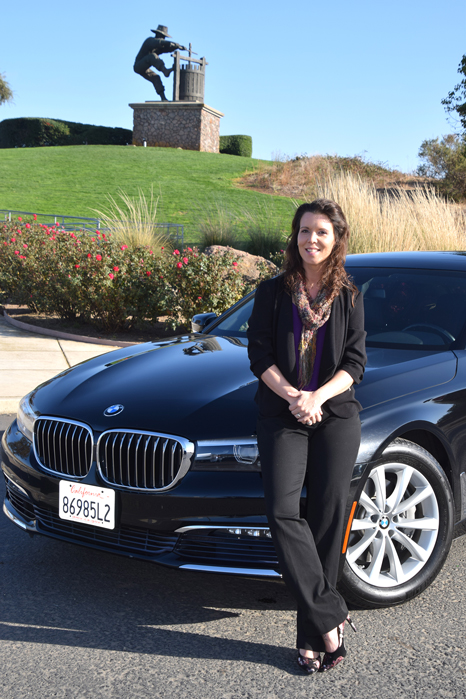 Zanone stands in front of the Grape Crusher, an iconic statue that welcomes visitors to Wine Country
“The area where we’ve grown quite well in the past five or six years has been inbound work as we started to put ourselves on the national scene,” says Buck. “I hear our affiliates singing Christina’s praises and we’re told that the passengers are happy with our chauffeurs, but this process didn’t happen overnight. We had to learn that side of the business, and we certainly were taught by some of the largest and best affiliates out there. We were a sleepy mom-and-pop shop that closed up at 8:00 at night; suddenly we had to have a 24-hour response. It happened gradually, but we knew it had to happen.”
Zanone stands in front of the Grape Crusher, an iconic statue that welcomes visitors to Wine Country
“The area where we’ve grown quite well in the past five or six years has been inbound work as we started to put ourselves on the national scene,” says Buck. “I hear our affiliates singing Christina’s praises and we’re told that the passengers are happy with our chauffeurs, but this process didn’t happen overnight. We had to learn that side of the business, and we certainly were taught by some of the largest and best affiliates out there. We were a sleepy mom-and-pop shop that closed up at 8:00 at night; suddenly we had to have a 24-hour response. It happened gradually, but we knew it had to happen.”
Zanone, like Buck, didn’t start out in hospitality, but has become equally passionate about representing her market and her company. After zigging from a degree in interior design and zagging from a career she was building with a high-end grocer, she accidentally discovered a calling. “I absolutely love this company and what I do and I can’t imagine not being where I am,” she says. “My time here has allowed me to appreciate my life and grow into something that I truly believe in.”
She has already become a seasoned veteran of industry events, but she recalls her first show in 2014. “It was an eye-opening experience,” she says. “We had a very different model than other transportation providers, but I’ve met so many great people whom I have learned from and whom I know I can ask if I have questions. Now we have a really good system in place, including technology that not only helps our dispatchers and chauffeurs but also greatly benefits our clients and passengers.”
The knowledge has been reciprocated: Buck is currently on the Greater California Livery Association’s Board of Directors, which had a phenomenal 2019 as the association was instrumental in fighting for the passage of AB5, a bill that is aimed to prevent the misclassification of employees and independent contractors. For the past few years, Buck has also been a member of Spinning Wheels, a group composed of owners and general managers that is facilitated by Arthur and Kathy Messina of Driving Results. In December, Buck welcomed the group into his headquarters for an up close and personal look at every department of his operation.
“I found that the [Spinning Wheels] group wasn’t necessarily surprised by how well we operate, but they had a lot of questions about how to start tapping into retail opportunities in their own areas. I don’t think they realized how multifaceted we are, and how much we can do,” says Zanone. She adds, “Many operators see these sporting events or great resorts in their area and they want to know how to get started. When I was a NextGen mentor at last year’s CD/NLA Show that was a big part of the discussion.”
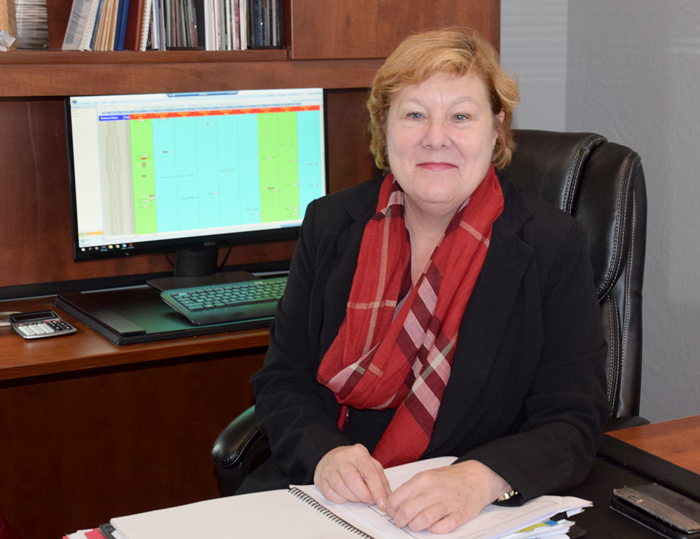 Director of Group Sales & Events Rose Kapsner
Another bright spot for Beau has been the uptick in groups, thanks to another local technology company: Airbnb. “It’s become a lot easier for a bunch of friends to rent a house, usually for a bachelorette or a birthday weekend. We find that it’s shifting from just couples to groups of six to 10 and larger,” says Zanone. “The affordability and availability of renting a house now makes it attractive for a girls’ trip or a handful of couples to get together.”
Director of Group Sales & Events Rose Kapsner
Another bright spot for Beau has been the uptick in groups, thanks to another local technology company: Airbnb. “It’s become a lot easier for a bunch of friends to rent a house, usually for a bachelorette or a birthday weekend. We find that it’s shifting from just couples to groups of six to 10 and larger,” says Zanone. “The affordability and availability of renting a house now makes it attractive for a girls’ trip or a handful of couples to get together.”
Very few parts of the country are immune to forces of nature, so Beau has learned to be nimble and react in emergency situations. The recent rolling power outages driven by California’s largest utility company, PG&E, was a massive headache not only for Beau but for an entire region already battered by a sensationalized national narrative that every wildfire led to utter destruction. With as little as 24-hours’ notice, the utility effectively crippled hundreds, if not thousands of businesses for several days during its most lucrative season this past October, leading to the cancellation of many longstanding reservations. In a political battle still being waged in media headlines between now-bankrupt PG&E and furious local and state government officials, Buck’s frustration is palpable.
“We are literally facing a national story that just won’t stop,” he says. “The fires in 2017 were serious, but people are constantly asking about it. We have to assure them that the fires only burned for a few days and they were nowhere near us. It’s rainy, green, and gorgeous everywhere I look around me, but that’s not the public’s perception. But then having the power shut off and turning people away three times in one month during our busy season—it’s been frustrating. It’s not just Northern California, obviously. Southern California has been affected by these national stories and outages.” The message: Wine Country is open for business.
"Many of the boutique wineries won’t accept visitors who arrive via TNC, first because they haven’t been vetted by the winery, but second because it can be so difficult for them to get a pickup from a taxi or a TNC.” — Thomas Buck“The 2017 fires really set the tone because anytime there’s a fire in the news, we’re getting calls asking, ‘You’re not affected by that, are you?’ That never happened before,” says Zanone. “When they arrive, they’re surprised when they don’t see smoke or a single singed area because that’s what they expected based on the coverage.”
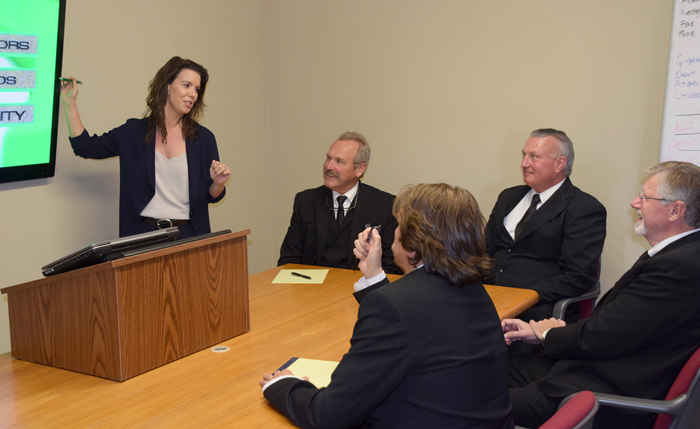 Zanone leads a class for chauffeurs and tour guides (L to R) Steve Reinbolt, Peter Nereo, Brian Anderson, and Kurt White
But, there was a silver lining—because they had a plan for that.
Zanone leads a class for chauffeurs and tour guides (L to R) Steve Reinbolt, Peter Nereo, Brian Anderson, and Kurt White
But, there was a silver lining—because they had a plan for that.
Technology allows companies to operate from most anywhere so Beau was temporarily relocated to Zanone’s home because she lives on a grid that also powers a medical center, which means that the electricity can’t be shut off to that area. Buck reports that each challenge makes his office team of 14 even more effective at crisis management and able to work through any scenario.
TNCs have impacted Beau significantly less than other services based in larger cities simply because, well, the driver pool isn’t as readily available in those more remote areas on a 24/7 basis. Although they have taken a bite out of Beau’s retail work closer to San Francisco, tour transportation has remained stable.
“Many of the boutique wineries won’t accept visitors who arrive via TNC, first because they haven’t been vetted by the winery, but second because it can be so difficult for them to get a pickup from a taxi or a TNC. Where I was once knocking on their doors, I find that wineries are now knocking on ours because of our reputation,” Buck says. “They appreciate that we respect their business.”
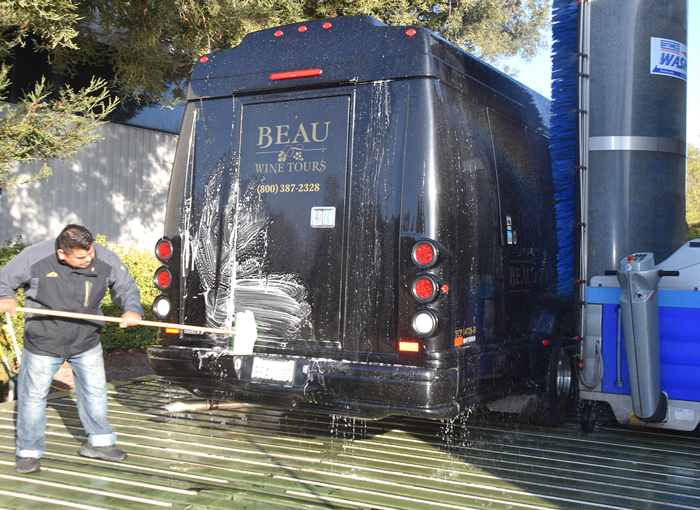 Detailer Tony Salvador cleans a Grech vehicle
So, if all this wine talk hasn’t made you thirsty, perhaps Buck’s passion project, Sire Estate, will.
Detailer Tony Salvador cleans a Grech vehicle
So, if all this wine talk hasn’t made you thirsty, perhaps Buck’s passion project, Sire Estate, will.
Buck says that it was always a dream to make his own wine and have his own label one day, but it wasn’t until he actually got serious about the idea back in 2012 that he discovered how solid his relationships with growers were.
“I was surprised not only by how willing vintners were to sell me fruit, but to sell me some of their best fruit, based on our relationships and the knowledge they had of me and my company,” he says. “I love wine; it’s a large part of why I built a career in this industry. One thing led to another, and what started as a small hobby has become a full second job for me.”
Buck began working with renowned winemaker and consultant Julien Fayard, who studied at some of the best houses in Bordeaux and is from a long line of master winemakers. Fayard has been called “the wine whisperer to watch” by the Robb Report, and he has worked with some of the most celebrated labels in Napa Valley.
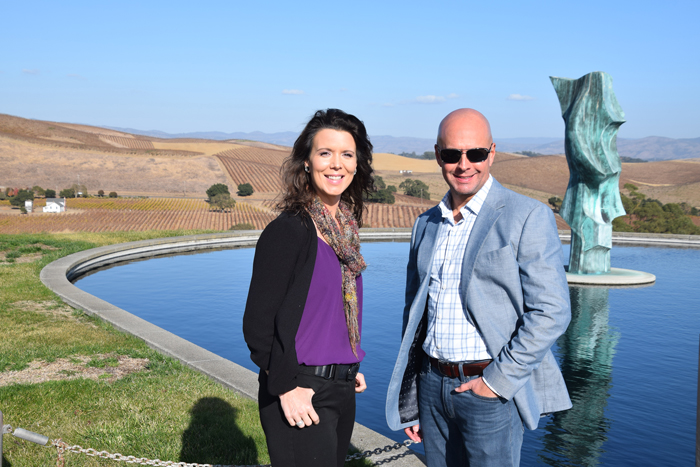 Zanone and Buck at Artesa Winery
“He’s been a great friend and a mentor on the winemaking side of the business for me,” says Buck. “It’s been a pretty good ride. We’ve contracted with three different vineyards so far for a small production—150 cases or less. My second release went out this fall.” Sire Estate can be found online at sireestate.com.
Zanone and Buck at Artesa Winery
“He’s been a great friend and a mentor on the winemaking side of the business for me,” says Buck. “It’s been a pretty good ride. We’ve contracted with three different vineyards so far for a small production—150 cases or less. My second release went out this fall.” Sire Estate can be found online at sireestate.com.
It’s obvious he’s having a lot of fun with his high-end Cabernet that he describes as “refined yet decadent, well-structured and balanced, with a touch of hedonism.” Buck clearly enjoys both of his businesses, but he’s most at home when entertaining guests and regaling them with interesting tidbits about his wine and the winemaking process—including quite a few of his fellow operators.
“When I first got started I didn’t realize how many wine enthusiasts there were in this industry, but now many operators are actually customers,” he says. “I can’t tell you how much I appreciate their support. I’ll often take them to dinner and we’ll have some wine when I travel to shows because it’s such an honor to share both sides of my business with them.” [CD0220]

